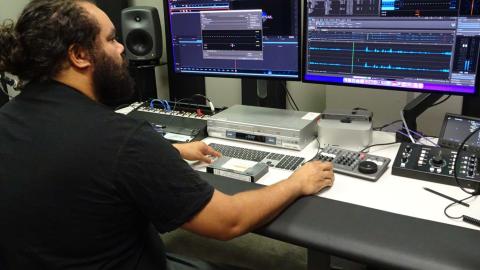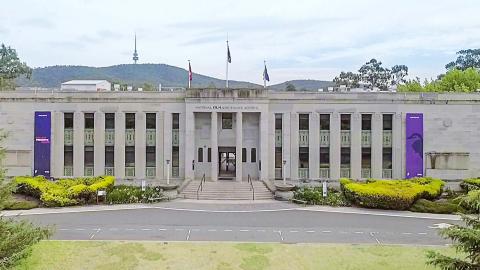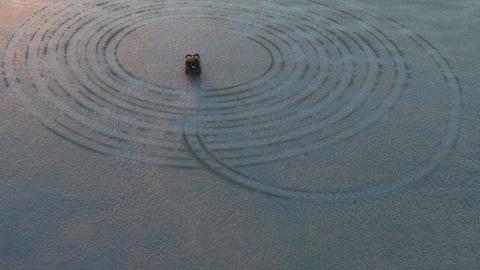
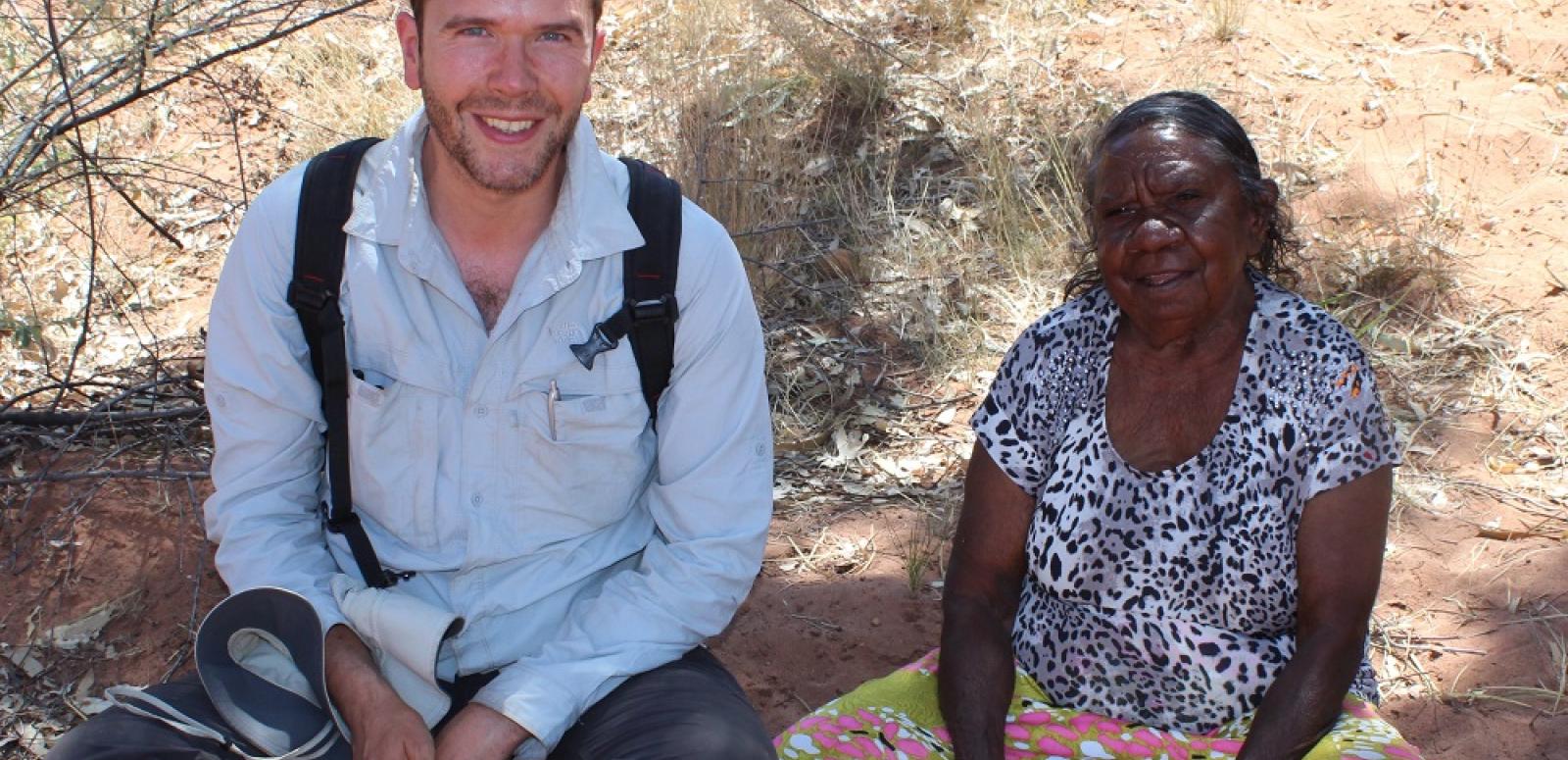
Martu treasures return to country
Return to country
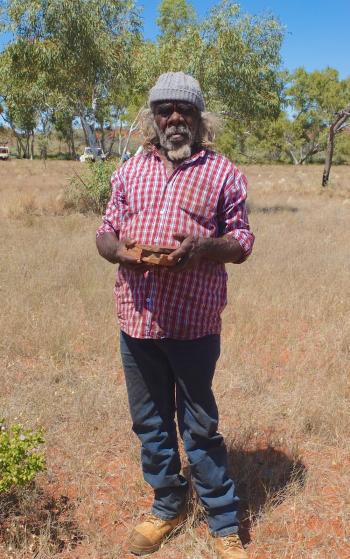
Waka Taylor remembers his first contact with the whitefellas well – how on his return to Parnngurr rockhole he found two white men standing next to the acacia tree he had hung the goanna he had caught earlier. They were Len Beadell, who constructed many of the roads through the desert, and Bob Tonkinson, an anthropologist that was working with Martu out of the then Jigalong Mission. The encounter would change the life of Waka – a Martu man who had grown up the traditional way – forever.
A couple of weeks ago Gabrielle Trainor, Chair of the NFSA Board, and I were on the ancestral lands of the Martu People in Western Australia. Their ownership of these lands were recognised in 2002 when Martu were awarded native title rights to over 13.6 million hectares of the Western Desert surrounding Karlamilyi National Park.
The Martu were some of the last of Australia’s First Peoples to make contact with European Australians. Many migrated or were ‘brought in’ from their lands into pastoral stations and missions up until the 1960s – a story prominently told in the book Cleared Out (2005) and the documentary Contact (2010). The Martu experience is also captured in Doris Pilkington’s stolen generations novel Follow the Rabbit-Proof Fence and its 2002 film adaptation. Since the 1980s Martu have returned to their lands to keep their culture and language strong and healthy.
Our visit to the mining hub of Newman and the remote Parnngurr community is the result of almost a decade of contact between Martu and the NFSA. In 2007 a delegation of elders and cultural workers from the Kanyirninpa Jukurrpa (KJ) organisation paid a historic visit to our Canberra headquarters, to receive digital copies of precious films and sound recordings held in our collection about Martu life and people. Then-Director of the NFSA, Paolo Cherchi Usai summarised our commitment as follows: ‘We have for decades protected the stories contained in these boxes. But these are not our stories. These are your stories, of your people, your country, and your culture. We are here to give back to you what belongs to you.’
Cultural maintenance through repatriation and digital access on country is only part of KJ’s many activities. But connecting young Martu and the old people with each other and with their past is a goal that film and recorded sound can help achieve. Over the years KJ have identified dispersed materials depicting the voices and images of Martu, from oral histories and interviews with the older generation who grew up in the desert to home movies shot by travellers on the Canning Stock Route. There are also anthropological and ethnographic sound recordings and films kept in Canberra at AIATSIS and the NFSA.
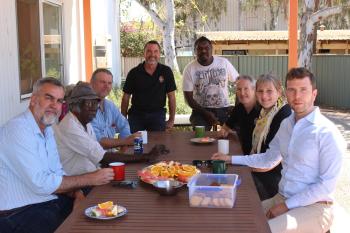
Making these images and sounds available to Martu – who in many instances live remotely, without broadband access – and ensuring their appropriate cultural authority over the material is the shared goal between our Indigenous Connections team and KJ’s Cultural Knowledge Program.
Martu have been to Canberra twice over the last eight years, so it was time for a senior NFSA delegation to visit their country for the signing of an historic cultural agreement with the community.
We met up with KJ CEO Peter See, coordinator Emma Stock and the KJ team at their offices in Newman, to learn first-hand about their many programs.
You can get a vivid idea of the range of their work through the fantastic documentaries produced by Dave Wells and Zan King with KJ and the community. View the Kanyirninpa Jukurrpa (KJ) 2014 trailer on Vimeo.
We visited the Martumili Artists Centre , home of some of the Western Desert’s most celebrated painters and weavers, and had the honour of meeting the artist Yunkurra Billy Atkins, who was working on a new painting.
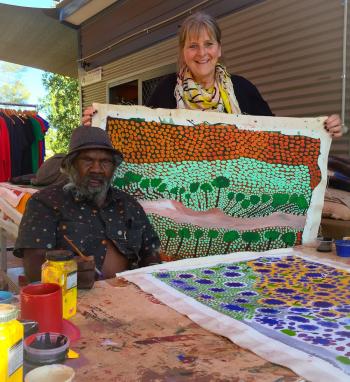
For the ceremonial signing of the cultural agreement between KJ and the NFSA we immersed ourselves even further in Martu life.
In contrast with the western notion of history, traditional Australian concepts of the past are intrinsically linked with the present and future. Culture is a continuity upheld by The Law and by ‘looking after country’. It knows no boundaries of disciplines: ecology, geography, art and archaeology are one and seamlessly blend in Martu belief and day-to-day practice.
That’s why the filmic and auditory records preserved by the NFSA are of such importance: seeing what Martu country looked like 30 years ago, and earlier; watching ‘bushman time’ Martu make spears and demonstrate traditional ways and craft; hearing the voices of those who have passed away talk about managing the ecosystem, kinship systems and the dispossession of their lands. Who are we to assume we know best what is significant, and what’s not? Only Martu can tell us.
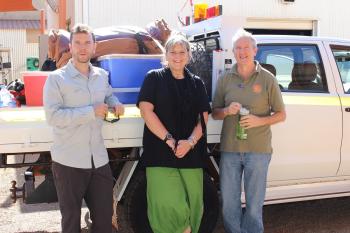
The cultural agreement establishes the Martu, through KJ as their representative, as the cultural stewards, and the NFSA as the archival stewards for the physical materials lodged in the national collection. Many good projects will flow from this important milestone: new films and programs produced by Martu about their culture, using the NFSA archive; resources available to Martu in community libraries in Newman, Jigalong, Parnngurr, Punmu and Kunawarritji; potential future training programs for Martu cultural workers in audiovisual archiving; and awareness training for non-Indigenous NFSA workers about Martu culture and law.
But the moving image is always stronger than the word. More than 100 Martu gathered the following night in remote Parnngurr, to welcome us to the signing of the agreement and for a film night under the stars at the new ranger station.
A five-hour trip later, over unpaved roads, crossing the remains of the rabbit-proof fence, we arrive in the community. Fires are lit and after a BBQ a traditional dance by boys and young men sets the scene for the signing, and a screening of some of the treasures from the KJ collection preserved at the NFSA.
The footage comes alive with the audience’s chatter and comments, the barking of dogs and children dancing in the video projector’s beam. These films have returned to their legitimate home.
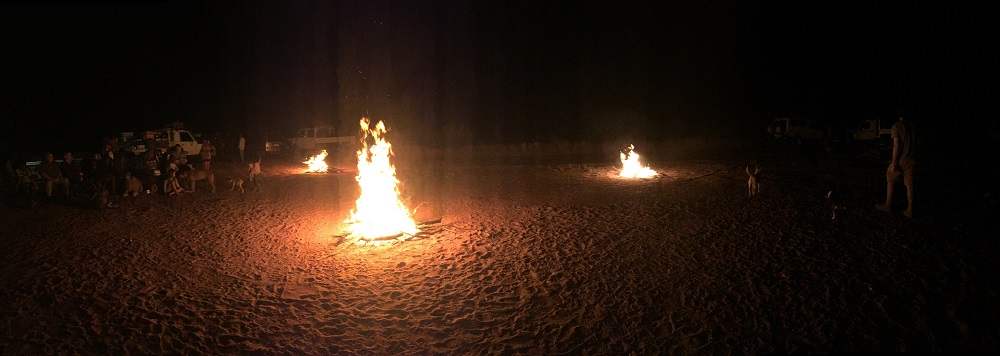
Community film night Parnngurr NFSA with permission by KJ
Time for us to leave, but not before a very special introduction to the Martu way of life. Peter and Emma, together with Waka, his partner Nancy and another three elders, drive us into the desert to visit three of the more than 200 significant dreamtime sites the Martu have mapped over the last decade. The desert is alive with wildflowers, and a return to traditional land management practices of mosaic burning has rendered it incredibly diverse, healthy and prosperous.
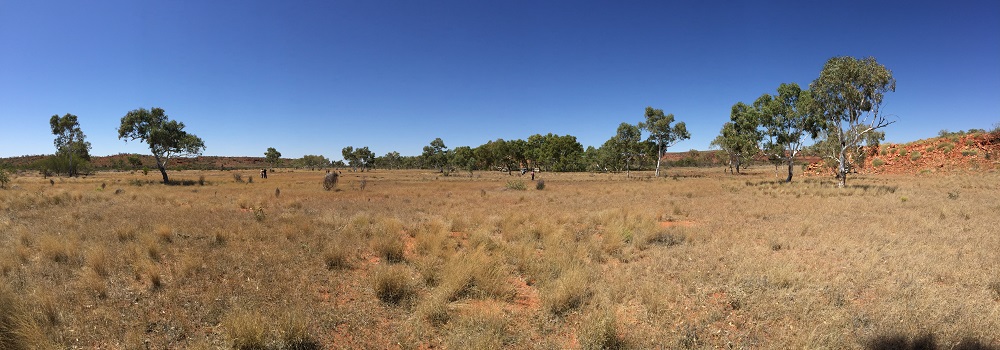
Healthy Martu country With permission from Kanyirninpa Jukurrpa
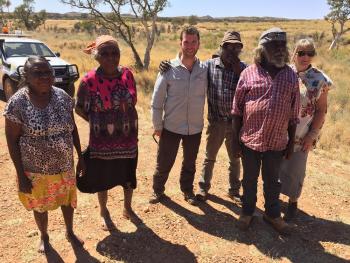
We learn about some of the stories that connect soaks and rock holes; collect bush tomatoes and watch a kirti-kirt (hill kangaroo; pronounced ‘giddy giddy’) scale a ravine.
We visit a camp site used for millennia by tribes from all over the region to gather, with grinding stones still strewn among tall and ancient river red gums.
And yes – we did get bogged in a sandy creek bed.
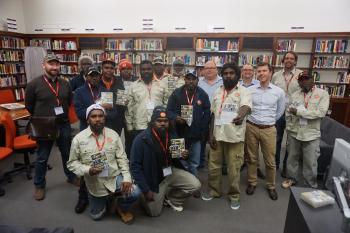
The relationship continues. The following week the Martu Leadership Program team visited Canberra and Sydney as part of the induction of young Martu leaders into ‘white man’s world’.
A visit to the NFSA’s preservation facilities in Canberra, and a visit with Gabrielle Trainor to our friends at the Sydney Opera House allowed us to reciprocate KJs and the Martu’s incredible hospitality.
To more future collaborations!
The National Film and Sound Archive of Australia acknowledges Australia’s Aboriginal and Torres Strait Islander peoples as the Traditional Custodians of the land on which we work and live and gives respect to their Elders both past and present.
